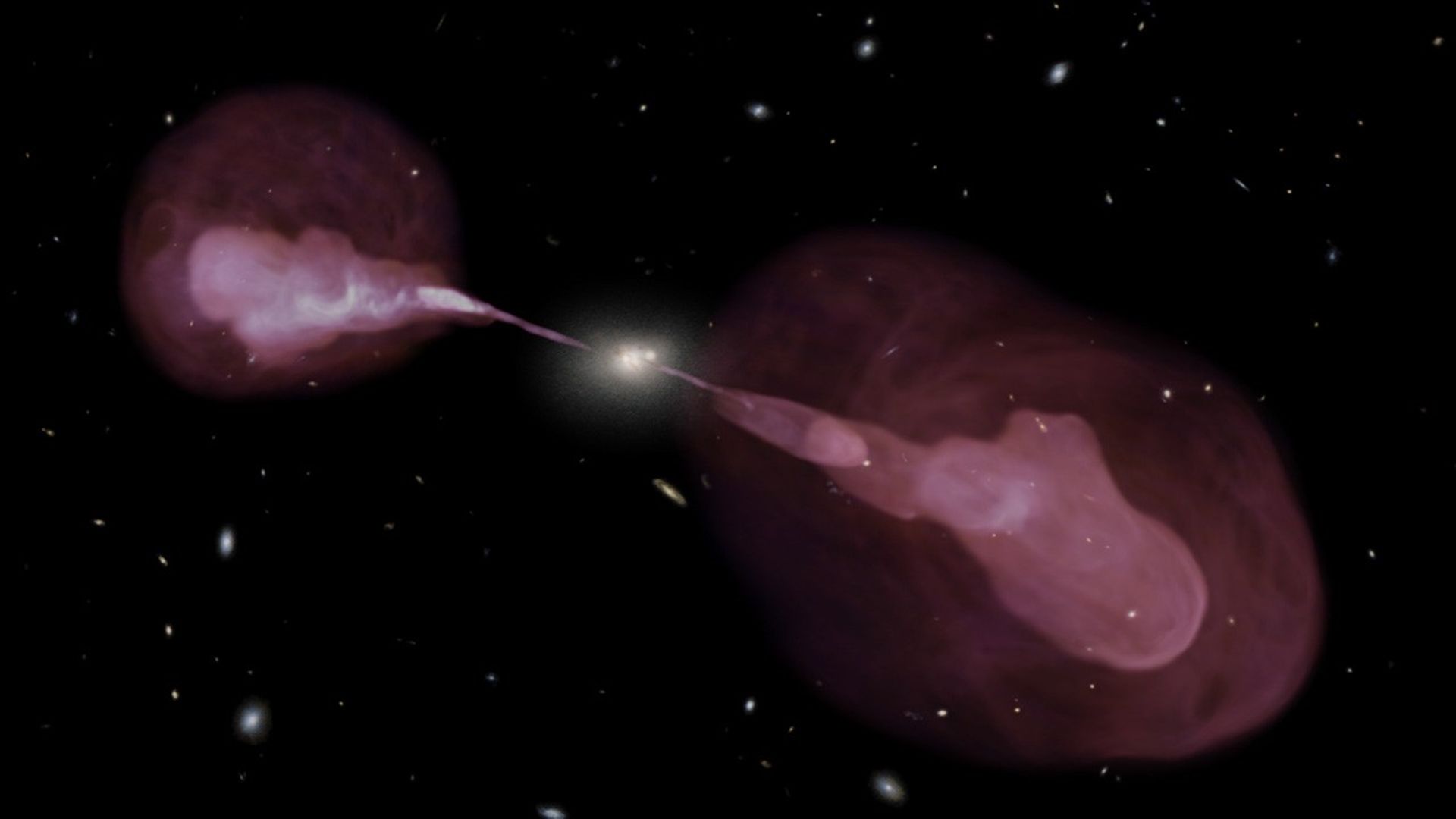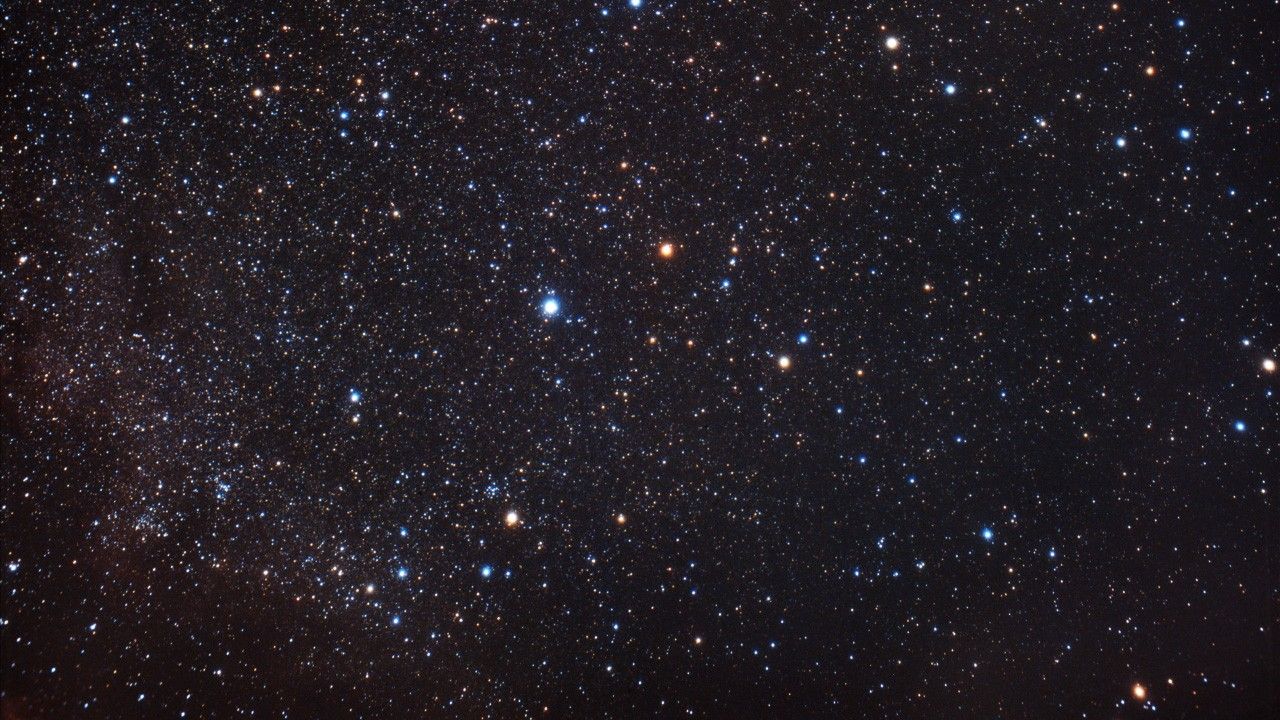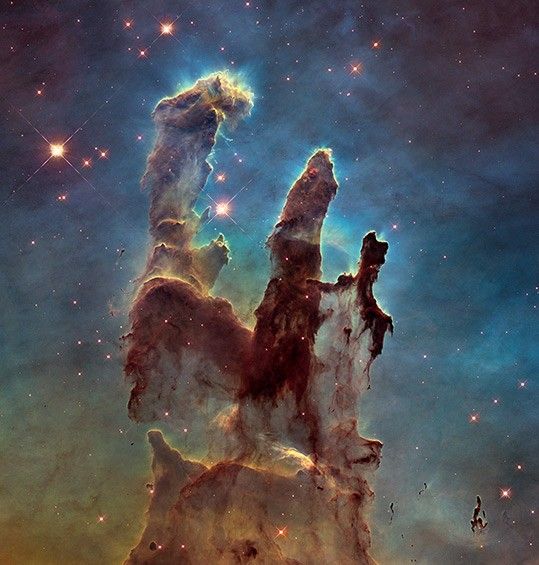Spectacular jets powered by the gravitational energy of a supermassive black hole in the core of the elliptical galaxy Hercules A illustrate the combined imaging power of two of astronomy's cutting-edge tools, the Hubble Space Telescope's Wide Field Camera 3, and the recently upgraded Karl G. Jansky Very Large Array (VLA) radio telescope in New Mexico.
1 min read
A Multi-Wavelength View of Radio Galaxy Hercules A
Related Images & Videos

A Multi-Wavelength View of Radio Galaxy Hercules A
Spectacular jets powered by the gravitational energy of a supermassive black hole in the core of the elliptical galaxy Hercules A illustrate the combined imaging power of two of astronomy's cutting-edge tools, the Hubble Space Telescope's Wide Field Camera 3, and the recently...

A 3-D Perspective on Hercules A
This video envisions a three-dimensional look at the combined visible light and radio emission from the active galaxy Hercules A. Unusually, this giant elliptical galaxy is not found in a large cluster of galaxies, but rather within a comparatively small group of galaxies. The...

Hercules A Zoom Sequence (Annotated)
This video zooms in on the active radio galaxy Hercules A. Spectacular jets powered by the gravitational energy of a supermassive black hole in the core of the elliptical galaxy Hercules A illustrate the combined imaging power of two of astronomy's cutting-edge tools, the Hubble...

Hercules A Zoom Sequence
This video zooms in on the active radio galaxy Hercules A. Spectacular jets powered by the gravitational energy of a supermassive black hole in the core of the elliptical galaxy Hercules A illustrate the combined imaging power of two of astronomy's cutting-edge tools, the Hubble...
Share
Details
Claire Andreoli
NASA’s Goddard Space Flight Center
Greenbelt, Maryland
claire.andreoli@nasa.gov
NASA, ESA, S. Baum and C. O’Dea (RIT), R. Perley and W. Cotton (NRAO/AUI/NSF), and the Hubble Heritage Team (STScI/AURA)

































